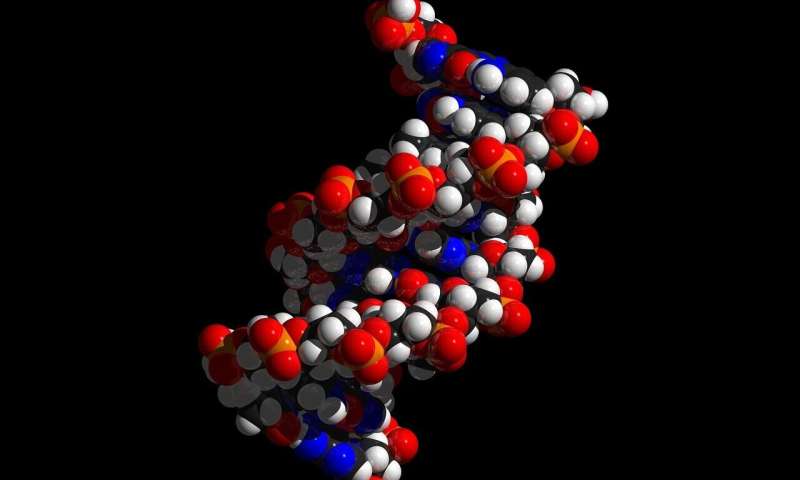Credit: CC0 Public Domain
A trio of researchers working at the School of Life Sciences, Tsinghua-Peking Center for Life Sciences, has chemically synthesized a mirror-image of Pfu DNA polymerase. In their paper published in the journal Nature Biotechnology, Chuyao Fan, Qiang Deng and Ting Zhu describe how they synthesized the mirror image enzyme and used it to create a mirror-image gene.
In biological chemistry, molecules have what is known as "handedness"—they can be right or left-handed. This means they can have identical shapes with identical atoms but are not copies of one another; and they cannot be superimposed over one another, similar to human right and left hands. Such molecules are referred to as D for right-handed, and L for left-handed. Nucleic molecules are notably all right-handed and proteins are all left-handed. Since such properties were discovered by Louis Pasteur back in the mid1800s, biologists have been trying to see if it is possible to synthesize left-handed nucleic molecules and/or right-handed proteins. In this new effort, the researchers have found a way to do so under certain conditions.
The work began with synthesizing short lengths of mirrored L-RNA and L-DNA. Doing so helped the researchers to learn more about such processes. They next created mirror-image D-protein DNA polymerases, which they used to replicate short lengths of L-DNA. Doing so provided them with a proof of concept. Next, the team synthesized a mirror-image enzyme known as Pfu DNA polymerase. Due to its large size, the researchers had to create it in two chunks, which they then hooked together. Finally, the researchers used the enzyme they had created to create a mirror-image gene that was 1,500 bases in length—one that encodes ribosomal RNA, which allowed the researchers to transcribe it once it contained information. The researchers note that such strands of mirrored DNA could be used for long-term information storage because there are no known enzymes that degrade it. Strands they created were still readable a year later. To prove the viability of their approach, the researchers used it to store text from Pasteur's original paper describing molecular handedness.
More information: Chuyao Fan et al, Bioorthogonal information storage in l-DNA with a high-fidelity mirror-image Pfu DNA polymerase, Nature Biotechnology (2021). DOI: 10.1038/s41587-021-00969-6
Journal information: Nature Biotechnology
© 2021 Science X Network























